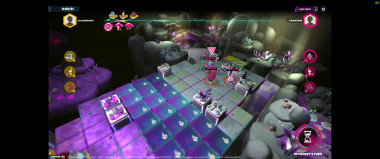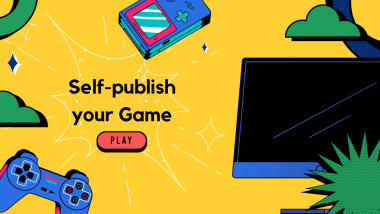In the vast and ever-evolving landscape of the gaming industry, the rise of indie games has been nothing short of revolutionary. These games, often crafted by small teams or even individual developers, have brought a fresh wave of creativity, innovation, and unique experiences to players around the world. Yet, in the midst of this creative renaissance, a critical challenge remains for indie developers: the art of marketing and community building.
Gone are the days when a remarkable game would simply “sell itself.” In today’s competitive market, where countless games are released each day across various platforms, indie developers face the daunting task of not only creating exceptional games but also ensuring that their creations reach their intended audience. This is where the significance of effective marketing and early community building comes to the forefront.
The Crucial Role of Marketing in Indie Game Success
Marketing is the bridge that connects a remarkable game with its potential players. It’s the process of crafting a compelling narrative, establishing a strong brand identity, and strategically reaching out to the target audience. For indie developers, marketing is not just an optional add-on; it’s a necessity that can determine whether a game sinks or swims in the tumultuous waters of the gaming industry.
The sad reality is that even the most brilliant indie games can go unnoticed if not marketed effectively. It’s like composing a beautiful symphony but performing it in an empty theater. Marketing is what brings the audience to their seats, eagerly awaiting the show. It’s about creating awareness, sparking interest, and driving engagement. Whether through social media, trailers, press releases, or community engagement, effective marketing can elevate a game from obscurity to stardom.
Early Community Building: The Foundation of Indie Game Success
While marketing casts a wide net to attract players, community building is the art of cultivating a dedicated, loyal fan base that will support the game through thick and thin. Think of it as nurturing a garden – it requires time, effort, and consistent care, but the rewards can be bountiful.
Starting to build a community early in the game’s development process can yield manifold benefits. Not only does it help create a buzz around the game, but it also provides developers with valuable feedback and insights. These insights can be used to refine the game, fixing bugs, improving mechanics, and even introducing new features based on player preferences.
Moreover, a strong community can serve as a built-in marketing engine. Enthusiastic fans will eagerly share their excitement with their networks, expanding the game’s reach far beyond what traditional marketing efforts could achieve alone. They become advocates, spreading the word, generating positive word-of-mouth, and building an aura of anticipation around the game’s release.
Crafting Your Indie Game Marketing Strategy
The process of marketing an indie game can seem overwhelming, especially for developers whose expertise lies primarily in game creation rather than marketing. But fear not – it’s a journey that can be navigated with careful planning and strategic thinking.
- Define Your Audience: The first step in any marketing strategy is to clearly define your target audience. Who are the players most likely to resonate with your game? What platforms do they use? What genres do they prefer? Understanding your audience is essential for tailoring your marketing efforts effectively.
- Create a Compelling Brand Identity: Just as a game has its unique characters and story, your game should have a distinct brand identity. This includes the game’s name, logo, color scheme, and overall visual style. A strong brand identity helps your game stand out in a crowded marketplace.
- Build a Stellar Online Presence: In today’s digital age, an online presence is non-negotiable. Create a professional website or landing page for your game, set up social media profiles on platforms frequented by your audience, and maintain a consistent posting schedule to keep your followers engaged.
- Craft Engaging Content: Content is king, and this holds true for indie game marketing as well. Develop captivating trailers, screenshots, gameplay videos, and blog posts that showcase your game’s unique features. Use storytelling techniques to create an emotional connection with potential players.
- Leverage Social Media: Social media platforms are powerful tools for indie game marketing. Engage with your audience through regular updates, behind-the-scenes glimpses, and interactive posts. Utilize relevant hashtags and participate in gaming discussions to expand your reach.
- Engage with Influencers and Press: Reaching out to gaming influencers and press can amplify your game’s visibility. Send out press releases, review copies, or early access builds to relevant gaming journalists, bloggers, and YouTubers who cater to your target audience.
- Offer Early Access and Betas: Providing players with opportunities to experience your game before its official release can create a sense of exclusivity and anticipation. Early access and beta versions also allow you to gather feedback and make improvements based on player input.
- Encourage User-Generated Content: Foster a sense of ownership and engagement among your community by encouraging them to create their own content related to your game. This could include fan art, fan fiction, or even gameplay videos. Showcase their creations to build a stronger bond.
- Run Contests and Giveaways: Contests and giveaways can create excitement and encourage participation from your community. Offer exclusive in-game items, merchandise, or even a chance to be included in the game’s credits as rewards.
- Stay Transparent and Responsive: Communication is key in community building. Be transparent about the development process, share updates on milestones, and address any concerns or questions from your community. Being responsive fosters trust and loyalty.
Conclusion: Nurturing Indie Game Dreams
In the realm of indie game development, where creativity knows no bounds, marketing and community building act as the catalysts that can propel a game from the depths of obscurity to the heights of success. Crafting a remarkable game is merely the first step; the journey to success continues with effective marketing strategies and a dedicated community that believes in your vision.
The resources compiled in this guide aim to provide you, the indie developer, with the tools, insights, and strategies needed to navigate the complex world of game marketing. From learning the nuances of social media engagement to harnessing the power of influencer partnerships, from crafting captivating trailers to fostering a thriving community, each resource is designed to empower you to turn your indie game into a sensation that resonates with players worldwide.
Remember, the journey of marketing and community building is not a sprint; it’s a marathon. It’s about building relationships, creating experiences, and connecting with players who share your passion. So, delve into these resources with an open mind, adapt their principles to suit your game’s unique identity, and embrace the journey of nurturing your indie game dreams into a triumphant reality. Your game deserves to be played, experienced, and cherished – and effective marketing and community building can make that happen.

- Zachary Strebeck (Video Game Lawyer)
- Raw Fury: Pitch Deck Template – good start!
- Pitch Deck Sample
- G.Round community-driven platform helping game developers gather feedback from the players to improve and polish their games to provide the ultimate gaming experience.

- Are you ready for the pitching survey
- Raw Fury publishing resources
- Pitch Deck sample
- TinyBuild about pitching
- Jason della Rocca
- The BackBone example

- Pitching & Crowdfunding [PLAYLIST]
- So You’re Ready to Pitch to a Publisher? You’re No
- 30 Things I Hate About Your Game Pitch
- Presentation Secrets for Impressing a Video Game Publisher
- Jason Della Rocca’s guide to pitching video games

- How To Pitch Your Project To Publishers [gamasutra]
- How to Pitch a Game to Publishers [modus]
- The IndieBeat: Tips from publishers and how to pitch to them [venturebeat]
- Creative Leadership: The Pitch (Part 1 of 3)

- What Does A Healthy Publisher/Developer Relationship Looks Like (With Real Contract Details!)
- What should a game publishing agreement look like? (& more!) 2
- What makes for a good game publishing contract? 2


- Steam Revenue Calculator
- Which time of year should you release your game?
- Financing model & Breakeven computation
- Unit Sale Estimates for Pitching
- Fellow Traveller Forecasting Template external
- GameDiscoverCo – BASIC net revenue predictions
- steamdatasuite – Store optimization for Steam



- Business Intelligence Benchmark
- Data Sources
- Steam Scout
- Google Trends
- AppAnie (for Mobile)
- SullyGnome (Twitch & Streaming audiences)
- SensorTower (Mobile & revenues)
- NPD (More AAA performances data)
- EEDAR (More AAA performances data)
- SteamDB
- SteamDataSuite
- SteamSpy
- VGChartz (more centered about retail games)
- QuanticFoundry (players audience, segments…)
- Newzoo (studies on different topics)
- Game Refinefy (Trends at game & features, Mobile)
- GameDataCrunch (great tool)
- The Game Index (funding trends)
- Rawg (wishlists, Steam data)

- VTran Community & Marketing guide
- Free email marketing guide for Indie devs
- Optimizing your Steam page
- Social media asset guide from Evolve PR
- guide to marketing on the cheap
- Beginners guide to social media [mos]
- Content Marketing Stack
- Social Marketing Success Kit [marketo]
- The Beginner’s Guide to SEO [moz]
- The 30 Best Websites to Learn Marketing for Free [sitepoint]







